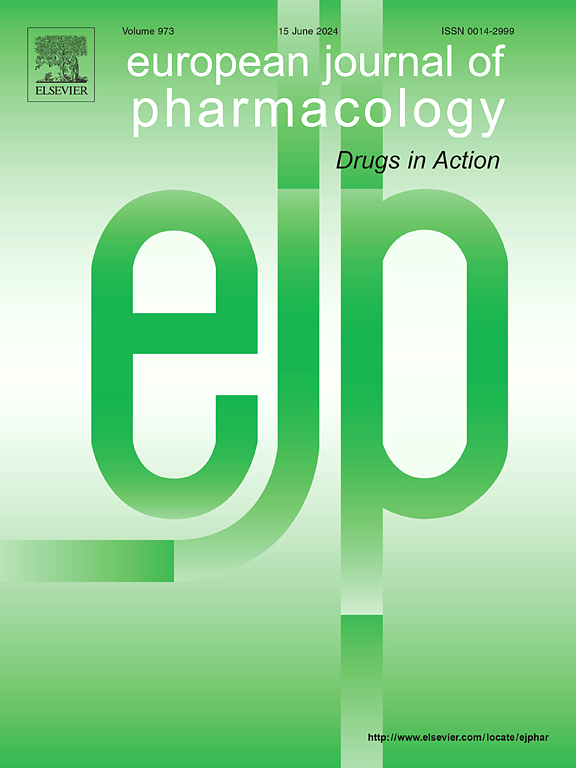Exploring Serotonin-1A receptor function in the effects of buspirone on cognition by molecular receptor expression and EEG analytical studies
IF 4.2
3区 医学
Q1 PHARMACOLOGY & PHARMACY
引用次数: 0
Abstract
Buspirone, a commonly prescribed medication for generalized anxiety disorder (GAD), is gaining attention for its narrow window of side effects such as lack of physical dependence, non-sedative properties as compared to other anxiolytic drugs. Its dose-specific therapeutic effects beyond anxiety highlights its clinical significance. Pharmacologically, buspirone activates serotonin-1A pre-synaptic autoreceptors and post-synaptic heteroreceptors which modulate serotonergic neurotransmission induced behavioral changes such as anxiolytic and nootropic effects. This study explored change in neural activity associated serotonin-1A receptors, induced by repeated administration of buspirone at specific doses (0.1 mg/kg and 3 mg/kg). Buspirone induced behavioral changes were assessed by Morris Water Maze (MWM) for cognitive functions, Elevated Plus Maze (EPM) for anxiety, RT-PCR (Reverse transcriptase-polymerase chain reaction) for 5-HT1A receptor expression levels, and EEG (electroencephalography) analysis of neuronal electrical activity in the frontal cortex. Our findings revealed that a low dose of buspirone (0.1 mg/kg) significantly enhanced spatial learning and memory compared to high dose (3 mg/kg). Low-dose treatment elevated mRNA expression levels of serotonin-1A receptors in hippocampus and decreased in midbrain raphe nuclei, with the opposite patterns observed in the high dose. In addition, EEG spectral analysis have revealed dose specific cross coupling frequency of theta-gamma and delta-beta brain waves. At low dose (0.1 mg/kg) positive correlation of theta-gamma coupling effect and negative correlation of delta beta as decoupling effect were observed. Conversely, at high dose (3 mg/kg), results showed opposite pattern with weak correlation of theta gamma coupling effect and positive correlation of delta-beta as coupling effect. These results suggest that buspirone enhances learning and memory with differential activation of pre and postsynaptic serotonin-1A receptors, altering its expression levels which influence neural activity associated with theta-gamma and delta-beta coupling effects. It provides valuable molecular insights on clinical significance of buspirone in mitigating neuropathological disorders such as behavioral disorders and neurocognitive decline associated with disrupted regulation of serotonin-1A neurotransmission at specific doses. Our findings provide molecular insights of dose dependent therapeutic potential of buspirone against neuropathological symptoms of behavioral disorders, neurocognitive decline associated with dysregulated serotonin-1A neurotransmission.
求助全文
约1分钟内获得全文
求助全文
来源期刊
CiteScore
9.00
自引率
0.00%
发文量
572
审稿时长
34 days
期刊介绍:
The European Journal of Pharmacology publishes research papers covering all aspects of experimental pharmacology with focus on the mechanism of action of structurally identified compounds affecting biological systems.
The scope includes:
Behavioural pharmacology
Neuropharmacology and analgesia
Cardiovascular pharmacology
Pulmonary, gastrointestinal and urogenital pharmacology
Endocrine pharmacology
Immunopharmacology and inflammation
Molecular and cellular pharmacology
Regenerative pharmacology
Biologicals and biotherapeutics
Translational pharmacology
Nutriceutical pharmacology.

 求助内容:
求助内容: 应助结果提醒方式:
应助结果提醒方式:


